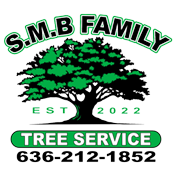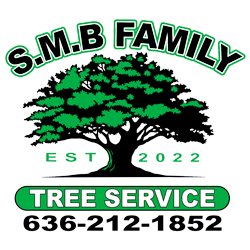When choosing cedar trees for your property, the options before you can seem overwhelming. You want to know you are choosing the best size and look for your ideal landscape. Each one is different, so where do you start?
S.M.B. Family Tree Service provides 24 hour emergency tree service in House Springs, MO.
All types of cedar trees are a popular choice for spacious properties. They can handle rigid temperatures and the thin oxygen levels at high altitudes.
When you scratch your head and wonder, “how many types of cedar trees are there,” it may surprise you to discover there are only four types of cedar trees.
Let’s learn the names and unique characteristics of all four types of genuine cedar trees.
Cedrus libani or Cedar of Lebanon
The opulent Lebanon cedar tree is so beloved in Southwest Asia that it appears on the official flag of Lebanon. It is a top choice in building furniture in the Middle East, but isn’t often used elsewhere.
Unlike most trees, Lebanon cedar looks flat on top. The branches grow straight out instead of toward the sun.
The broad trunk divides itself into several smaller trunks as the tree ages.
Cedrus Atlantica: Atlas
When you picture a typical cedar tree, you probably imagine the Atlas. It usually springs up to about 40 feet in height and then stops growing, making it a popular choice for backyard landscaping.
Many people call it a “blue atlas” because of the bluish tint of the needles.
The bark is brown like on most trees, but forms cracks as it grows and turns gray and brown.
Cedrus Deodara: Deodar
Lumber from the Deodar cedar tree is regularly used in new construction. In the Himalayas, they grow to a gargantuan 160 feet. In less ideal environments, they rarely broach 50 feet and look boxy, with a horizontal reach of 30 feet wide.
Deodar cedar trees have gray bark. Snug clusters of needles grow on the far-reaching, curved branches.
Young Deodars are narrow at the top and widen further down, resembling a pyramid. As they age, these physical attributes diminish, making the proportions more even.
Cedrus brevifolia: Cyprian
When you ask, “how many types of cedar trees are there,” don’t forget the Cyprian cedar. It is the most uncommon to spot in the wild. The silhouette of the Cyprian cedar is similar to the Lebanon variety, growing small needles on horizontal branches.
Because the Cyprian cedar is a smaller version than the Lebanon, it is ideal for landscapers who love the look of a Lebanon cedar but don’t have the space. In suburban areas, the Cyprian cedar completes growth at around 50 feet tall.
False Cedar Trees
There are several types of false cedar trees, mostly seen in North America. Scientists usually classify them as juniper or cyprus.
In the cyprus family, you will find the Northern White. It is a popular choice for suburban hedges.
If you walk past a tree and think you smell pineapple, you are near a Western Red.
Neighbors who invest in cedar fencing for their yard probaby opted for the juniper tree called Eastern Red.
These tricky counterfeit cedars along with the rest smell just as nice and look as pretty as the four founders of the cedar community.
Comprehensive Tree Service
Homeowners should choose the right tree care professionals for their needs. The S.M.B. Family Tree Service in House Springs, MO, knows how many types of cedar trees there are and how to care for each one on your property. Call us at 636-212-1852 to request a free estimate for our tree services.

